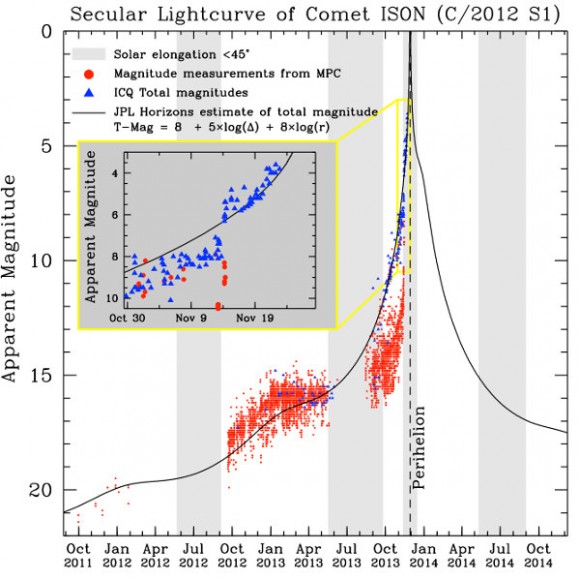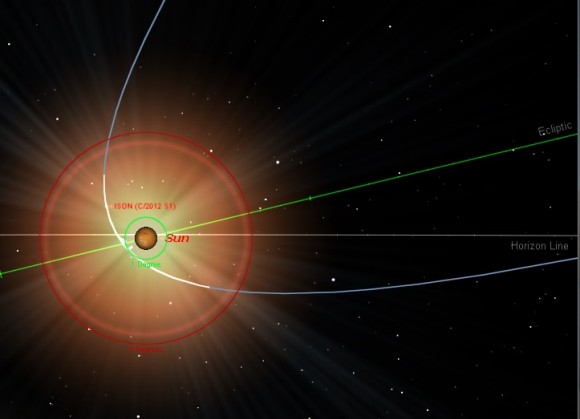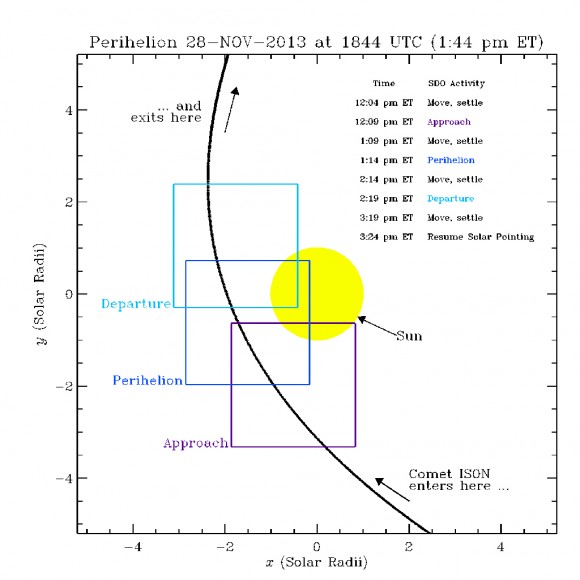Note: you can also follow ISON’s current progress as seen from SOHO at their website!
The tracking plan for the Solar Dynamics Observatory on November 28th as ISON passes through perihelion. (Credit: NASA/SDO).
For over the past year since its discovery, pundits have pondered what is now the astronomical question of the approaching hour: just what is ISON going to do post-perihelion? Will it dazzle or fizzle? In this context, ISON has truly become “Schrödinger’s Comet,” both alive and dead in the minds of those who would attempt to divine its fate.
Recent estimates place ISON’s nucleus at between 950 and 1,250 metres in diameter. This is well above the 200 metre size that’s considered the “point of no return” for a comet passing this close to the Sun. But again, another key factor to consider is how well put together the nucleus of the comet is: a lumpy rubble pile may not hold up against the intense heat and the gravitational tug of the Sun!

Current updated light curve for ISON. Be sure to check with NASA’s Comet ISON Observing Campaign for the latest updates. (Compiled by Matthew Knight on November 24th, 2013).
But what are the current prospects for spotting ISON after its fiery perihelion passage?
If the comet holds together, reasonable estimates put its maximum brightness near perihelion at between magnitudes -3 and -5, in the range of the planet Venus at maximum brilliancy. ISON will, however, only stand 14’ arc minutes from the disk of the Sun (less than half its apparent diameter) at perihelion, and spying it will be a tough feat that should only be attempted by advanced observers.
Note that for observers based at high northern latitudes “north of the 60,” the shallow angle of the ecliptic might just make it possible to spot Comet ISON low in the dawn after perihelion and before sunrise November 29th:

ISON post-perihelion at sunrise on November 29th as seen from Fairbanks, Alaska. (Created using Starry Night Education software.
Three Comet ISON scenarios from NASA's viewpoint:
...and why Comet ISON is particularly intriguing:

